On Semi Q32M210 32位MCU评估开发方案
时间:08-17
来源:互联网
点击:
On Semi公司的Q32M210是精密的混合信号32位MCU, 集成了2个16位模数转换器、高精度电压参考、3个10位数模转换器和基于ARM® Cortex™-M3 32位内核以及高度可配置的模拟前端及可编程的32位内核和256kB闪存.芯片还集成所有关键功能,包括实时时钟、电源管理、112段液晶显示屏(LCD)接口、片上低阻抗开关、非限定(uncommitted)运算放大器、精密电压参考(< 50 PPM/℃)及电阻电容(RC)振荡器。器件具有高精度感测,可预测工作以及低功耗等特性,主要用于便携感测应用如病人监测器、无线心电图机(ECG)和血糖仪等便携医疗设备.本文介绍了Q32M210主要特性,功能方框图以及Q32M210评估板主要特性,电路图和PCB元件布局图.
Q32M210 is a precision, mixed−signal 32−bit microcontroller. The microcontroller is built on the high performance ARMCortex_−M3 processor.
The microcontroller incorporates a highly configurable sensor interface designed to work directly with a wide range of sensors having multiple characteristics, including specialized electrochemical sensors. The sensor interface includes dual programmable gain amplifiers, dual 16−bit Analog−to−Digital converters, triple 10−bit Digital−to−Analog converters (for voltage waveform generation and other applications) and three uncommitted, low−noise opamps with configurable signal multiplexing. Flexible connectivity to external non−volatile memory, personal computers, wireless devices, LCD displays and a wide range of other peripherals is enabled by several digital interfaces including I2C, USB (2.0 full−speed compliant) and a high−speed SPI/SQI interface.
The microcontroller features flexible clocking options as well as intelligent failure monitoring of power and application interruptions required by high performance, portable, battery operated applications.
All necessary clocks including an internal oscillator, real−time clock and a dedicated clock for USB operation are available on−chip (external crystals required for RTC and USB).An embedded power management unit, which incorporates several low power modes, allows application developers to minimize both standby and active power under a wide range of operating conditions. The ultra−low sleep current makes the microcontroller ideal for applications that remain inactive for long periods of time.
A large on−chip non−volatile flash memory (256 kB) combined with on−chip SRAM (48 kB) supports complex applications and simplifies application development. The flash contains built−in hardware error checking and correction (ECC) for application reliability. Additionally, a configurable DMA unit which supports independent peripheral−to−memory, memory−to−memory, and memory−to− peripheral channels provides flexible, low power data transfers without processor intervention.
A suite of industry−standard development tools, hands−on training and full technical support are available to reduce design cycle time and speed time−to−market.
The Q32M210 Microcontroller is Pb−Free, Halogen Free/BFR Free and RoHS Compliant
Q32M210主要特性:
Ultra Low− ower and Smart Power Management
ower and Smart Power Management
Less than 400 _A / MHz, up to 16 MHz clock speed
Reliable operation down to 1.8 V; 3.3 V nominal supply voltage
Ultra−low−current sleep mode with Real−time Clock active (< 750 nA)
Low−current standby mode with register and SRAM retention (< 26 _A)
Integrated power supplies minimize need for external components. Only a minimum of external passives is required
Efficient, Powerful and Robust Processing Architecture
32−bit ARM Cortex−M3 CPU
256 kB on−chip flash with integrated hardware ECC for program and user data storage
48 kB on−chip SRAM
Flexible DMA, 4 general−purpose timers, CRC calculator
No external voltage required for flash write operation
Low−Noise, Low−Leakage, Low−Temperature Drift, Configurable Sensor Interface
Triple ultra low−noise opamps with low−leakage inputs and configurable outputs
Dual on−chip Programmable Gain Amplifiers (PGA) and ADCs with flexible input multiplexing and wide dynamic range
Reconfigurable voltage detection unit
Optimal dynamic range scaling of sensor signals
Flexible on−chip signal routing for dynamic reconfigurability
Minimal temperature drift of gain and offset errors allows for precise calibration
Built−in Temperature Sensor
Predictable Operation
Dedicated brown−out protection circuit prevents execution of code outside of operating range
Integrated hardware−based ECC for on−chip flash maintains code and data integrity
Watchdog timer
High Precision Analog−to−Digital Conversion and Digital−to−Analog Conversion
Dual 16−bit ADCs with on−the−fly data rate configurability
Triple 10−bit DACs with configurable dynamic range
Precision Voltage Reference
On−chip, low temperature drift (< 50 ppm/C) voltage reference for ADCs and DACs
Flexible On−Chip Clocking
 rocessor supports speeds up to 16 MHz provided either through internal oscillator or externally supplied clock
rocessor supports speeds up to 16 MHz provided either through internal oscillator or externally supplied clock
Flexible Sensor Interconnections
Triple low Ron analog multiplexers, including an 8:1 input mux
Quad SPST and quad multi−switches for effective simultaneous connection to different sensors
USB 2.0 Full−Speed Interface
Built−in transceiver for 2.0 Full−speed compatible (12 Mbps) operation with dedicated power supply
Flexible External Interfaes
Configurable Interface Wakeup pins with configurable pull−ups and pull−downs
8 Configurable GPIO interrupts
Dual UARTs, dual SPI, SQI, I2C, PCM (including I2S mode), GPIOs
LCD Interface
Up to 112 segments with integrated charge pump and backlight driver (up to 10 mA)
Packaging
Available in 140−pin TLLGA
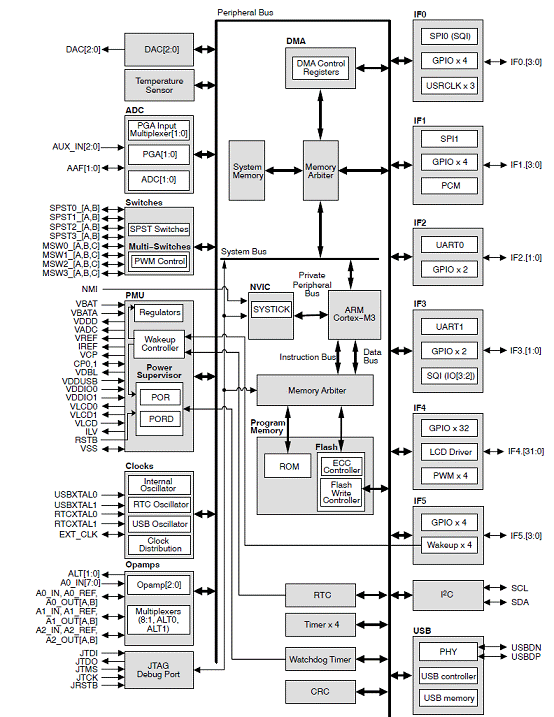
图1.Q32M210功能方框图
This manual provides detailed information about the configuration and use of the Evaluation and Development Board. The Evaluation and Development Board facilitates prototype system evaluation, hardware verification, and firmware development.
The Evaluation and Development Board is designed for use with the software tools included with the Evaluation and Development Kit (EDK) to evaluate the performance and capabilities of the Q32M210 microcontroller.
The Evaluation and Development Board enables developers to evaluate the performance and capabilities of Q32M210 in addition to developing, demonstrating and debugging applications.
Q32M210评估板包括:
• A power supply unit that provides a regulated supply to Q32M210, either from a USB or a 9 V power supply
• Access to all peripherals via standard 0.1" headers
• An onboard J-Link1 interface for connecting a PC to the Q32M210 ARM Cortex-M3 processor’s JTAG port through USB
• An I2C interface compatible with the Philips I2C protocol as described in the Philips I2C-Bus Specification document
• A bank of LEDs for monitoring IF4 GPIOs
• Five user-defined momentary switches
• An onboard 256 kbit SPI EEPROM
• An onboard thermistor for temperature measurements
• Provisions to populate an optional RS232 transceiver circuit
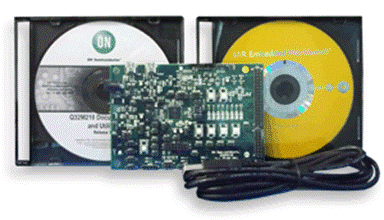
图2.Q32M210评估板外形图
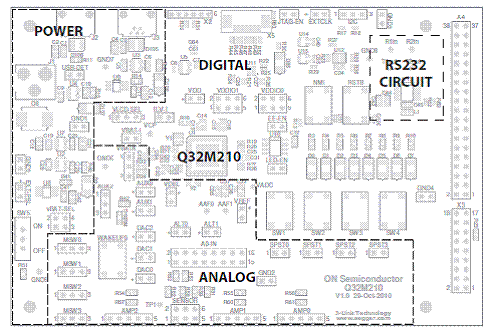
图3.Q32M210评估板电路配置图
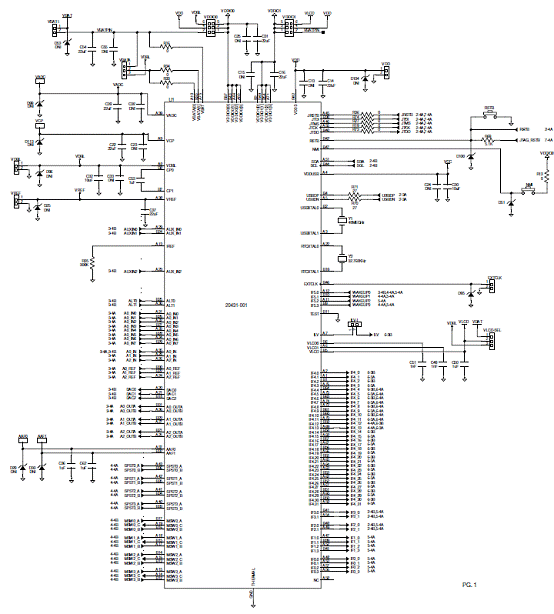
图4.Q32M210评估板电路电路图 32M210电路
32M210电路
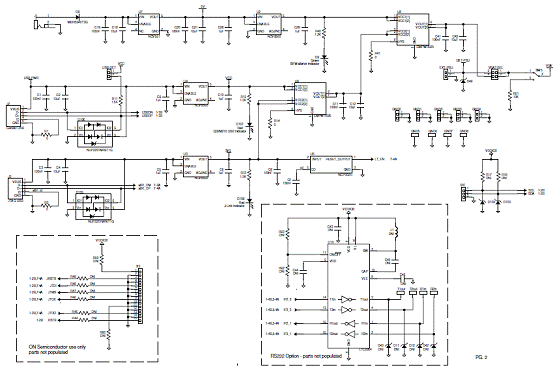
图5.Q32M210评估板电路电路图 SU/通信电路
SU/通信电路

图6.Q32M210评估板电路电路图 32M210模拟接口电路
32M210模拟接口电路
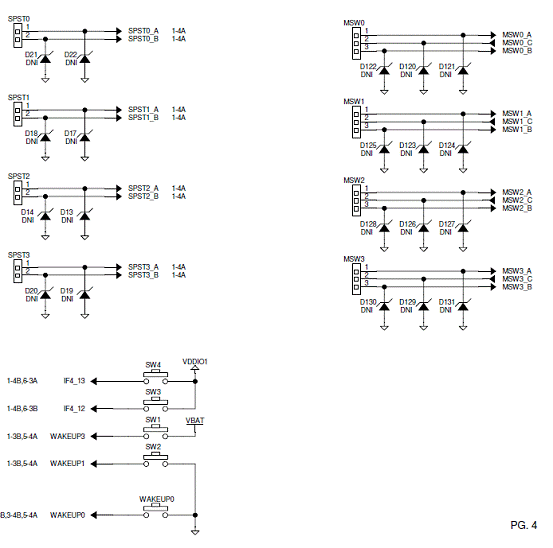
图7.Q32M210评估板电路电路图 32M210模拟开关电路
32M210模拟开关电路

图8.Q32M210评估板电路电路图: IF0-IF3和IF5接口电路
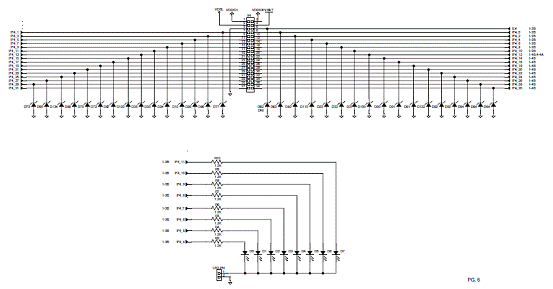
图9.Q32M210评估板电路电路图: IF4-LCD接口电路
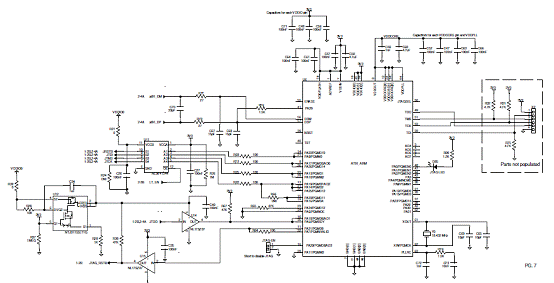
图10.Q32M210评估板电路电路图: IF4-LCD J-链接OB SAM电路
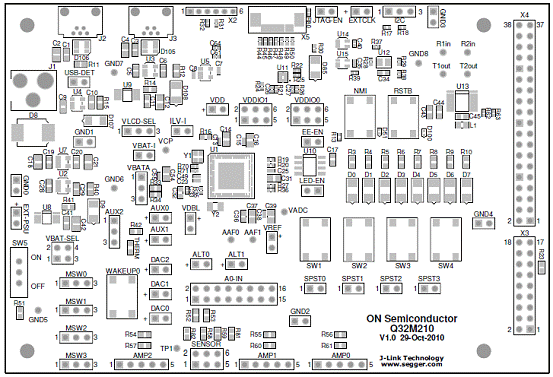
图11.Q32M210评估板电路元件布局图
详情请见:
http://www.onsemi.cn/pub_link/Collateral/Q32M210-D.PDF
和
http://www.onsemi.cn/pub_link/Collateral/0W674001GEVK_MANUAL.PDF
Q32M210 is a precision, mixed−signal 32−bit microcontroller. The microcontroller is built on the high performance ARMCortex_−M3 processor.
The microcontroller incorporates a highly configurable sensor interface designed to work directly with a wide range of sensors having multiple characteristics, including specialized electrochemical sensors. The sensor interface includes dual programmable gain amplifiers, dual 16−bit Analog−to−Digital converters, triple 10−bit Digital−to−Analog converters (for voltage waveform generation and other applications) and three uncommitted, low−noise opamps with configurable signal multiplexing. Flexible connectivity to external non−volatile memory, personal computers, wireless devices, LCD displays and a wide range of other peripherals is enabled by several digital interfaces including I2C, USB (2.0 full−speed compliant) and a high−speed SPI/SQI interface.
The microcontroller features flexible clocking options as well as intelligent failure monitoring of power and application interruptions required by high performance, portable, battery operated applications.
All necessary clocks including an internal oscillator, real−time clock and a dedicated clock for USB operation are available on−chip (external crystals required for RTC and USB).An embedded power management unit, which incorporates several low power modes, allows application developers to minimize both standby and active power under a wide range of operating conditions. The ultra−low sleep current makes the microcontroller ideal for applications that remain inactive for long periods of time.
A large on−chip non−volatile flash memory (256 kB) combined with on−chip SRAM (48 kB) supports complex applications and simplifies application development. The flash contains built−in hardware error checking and correction (ECC) for application reliability. Additionally, a configurable DMA unit which supports independent peripheral−to−memory, memory−to−memory, and memory−to− peripheral channels provides flexible, low power data transfers without processor intervention.
A suite of industry−standard development tools, hands−on training and full technical support are available to reduce design cycle time and speed time−to−market.
The Q32M210 Microcontroller is Pb−Free, Halogen Free/BFR Free and RoHS Compliant
Q32M210主要特性:
Ultra Low−
 ower and Smart Power Management
ower and Smart Power ManagementLess than 400 _A / MHz, up to 16 MHz clock speed
Reliable operation down to 1.8 V; 3.3 V nominal supply voltage
Ultra−low−current sleep mode with Real−time Clock active (< 750 nA)
Low−current standby mode with register and SRAM retention (< 26 _A)
Integrated power supplies minimize need for external components. Only a minimum of external passives is required
Efficient, Powerful and Robust Processing Architecture
32−bit ARM Cortex−M3 CPU
256 kB on−chip flash with integrated hardware ECC for program and user data storage
48 kB on−chip SRAM
Flexible DMA, 4 general−purpose timers, CRC calculator
No external voltage required for flash write operation
Low−Noise, Low−Leakage, Low−Temperature Drift, Configurable Sensor Interface
Triple ultra low−noise opamps with low−leakage inputs and configurable outputs
Dual on−chip Programmable Gain Amplifiers (PGA) and ADCs with flexible input multiplexing and wide dynamic range
Reconfigurable voltage detection unit
Optimal dynamic range scaling of sensor signals
Flexible on−chip signal routing for dynamic reconfigurability
Minimal temperature drift of gain and offset errors allows for precise calibration
Built−in Temperature Sensor
Predictable Operation
Dedicated brown−out protection circuit prevents execution of code outside of operating range
Integrated hardware−based ECC for on−chip flash maintains code and data integrity
Watchdog timer
High Precision Analog−to−Digital Conversion and Digital−to−Analog Conversion
Dual 16−bit ADCs with on−the−fly data rate configurability
Triple 10−bit DACs with configurable dynamic range
Precision Voltage Reference
On−chip, low temperature drift (< 50 ppm/C) voltage reference for ADCs and DACs
Flexible On−Chip Clocking
 rocessor supports speeds up to 16 MHz provided either through internal oscillator or externally supplied clock
rocessor supports speeds up to 16 MHz provided either through internal oscillator or externally supplied clockFlexible Sensor Interconnections
Triple low Ron analog multiplexers, including an 8:1 input mux
Quad SPST and quad multi−switches for effective simultaneous connection to different sensors
USB 2.0 Full−Speed Interface
Built−in transceiver for 2.0 Full−speed compatible (12 Mbps) operation with dedicated power supply
Flexible External Interfaes
Configurable Interface Wakeup pins with configurable pull−ups and pull−downs
8 Configurable GPIO interrupts
Dual UARTs, dual SPI, SQI, I2C, PCM (including I2S mode), GPIOs
LCD Interface
Up to 112 segments with integrated charge pump and backlight driver (up to 10 mA)
Packaging
Available in 140−pin TLLGA

图1.Q32M210功能方框图
This manual provides detailed information about the configuration and use of the Evaluation and Development Board. The Evaluation and Development Board facilitates prototype system evaluation, hardware verification, and firmware development.
The Evaluation and Development Board is designed for use with the software tools included with the Evaluation and Development Kit (EDK) to evaluate the performance and capabilities of the Q32M210 microcontroller.
The Evaluation and Development Board enables developers to evaluate the performance and capabilities of Q32M210 in addition to developing, demonstrating and debugging applications.
Q32M210评估板包括:
• A power supply unit that provides a regulated supply to Q32M210, either from a USB or a 9 V power supply
• Access to all peripherals via standard 0.1" headers
• An onboard J-Link1 interface for connecting a PC to the Q32M210 ARM Cortex-M3 processor’s JTAG port through USB
• An I2C interface compatible with the Philips I2C protocol as described in the Philips I2C-Bus Specification document
• A bank of LEDs for monitoring IF4 GPIOs
• Five user-defined momentary switches
• An onboard 256 kbit SPI EEPROM
• An onboard thermistor for temperature measurements
• Provisions to populate an optional RS232 transceiver circuit

图2.Q32M210评估板外形图

图3.Q32M210评估板电路配置图

图4.Q32M210评估板电路电路图
 32M210电路
32M210电路
图5.Q32M210评估板电路电路图
 SU/通信电路
SU/通信电路
图6.Q32M210评估板电路电路图
 32M210模拟接口电路
32M210模拟接口电路
图7.Q32M210评估板电路电路图
 32M210模拟开关电路
32M210模拟开关电路
图8.Q32M210评估板电路电路图: IF0-IF3和IF5接口电路

图9.Q32M210评估板电路电路图: IF4-LCD接口电路

图10.Q32M210评估板电路电路图: IF4-LCD J-链接OB SAM电路

图11.Q32M210评估板电路元件布局图
详情请见:
http://www.onsemi.cn/pub_link/Collateral/Q32M210-D.PDF
和
http://www.onsemi.cn/pub_link/Collateral/0W674001GEVK_MANUAL.PDF
MCU 电压 ARM Cortex 模拟前端 电源管理 LCD 放大器 电阻 电容 振荡器 电路图 PCB USB ADC DAC LED 电路 相关文章:
- 欧姆龙血压计如何实现低成本设计(12-25)
- 最新血氧仪低功耗设计方案(09-17)
- 能同时满足高低端血压计设计的软硬件平台(06-02)
- 基于MSP430的便携式医疗监护系统的设计(06-12)
- 基于飞思卡尔MC9S08QG4的便携式自动呼吸控制系统的设计(04-17)
- 血糖仪原理设计及仿制开发方案详解(03-24)
